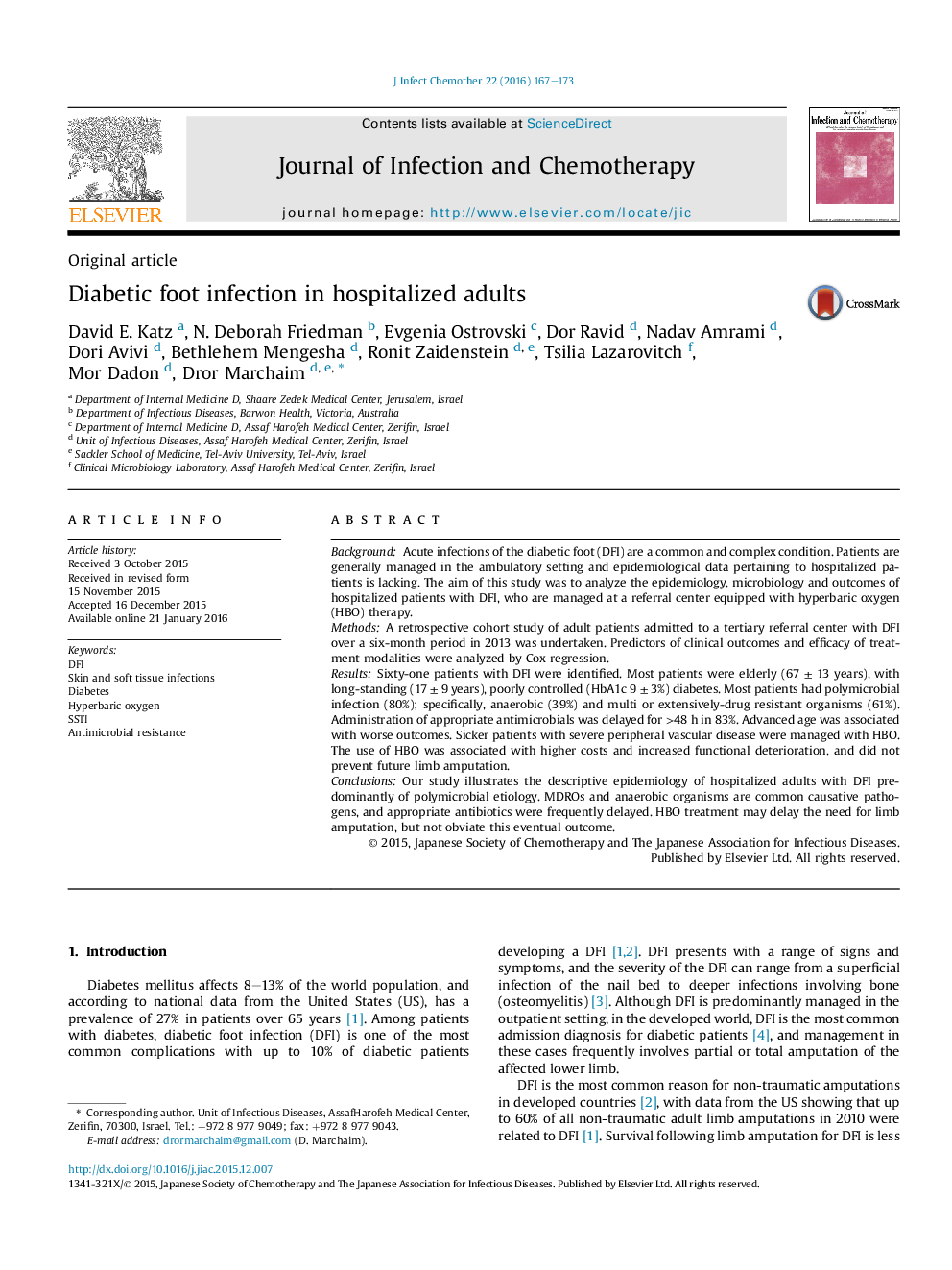| Article ID | Journal | Published Year | Pages | File Type |
|---|---|---|---|---|
| 3376687 | Journal of Infection and Chemotherapy | 2016 | 7 Pages |
BackgroundAcute infections of the diabetic foot (DFI) are a common and complex condition. Patients are generally managed in the ambulatory setting and epidemiological data pertaining to hospitalized patients is lacking. The aim of this study was to analyze the epidemiology, microbiology and outcomes of hospitalized patients with DFI, who are managed at a referral center equipped with hyperbaric oxygen (HBO) therapy.MethodsA retrospective cohort study of adult patients admitted to a tertiary referral center with DFI over a six-month period in 2013 was undertaken. Predictors of clinical outcomes and efficacy of treatment modalities were analyzed by Cox regression.ResultsSixty-one patients with DFI were identified. Most patients were elderly (67 ± 13 years), with long-standing (17 ± 9 years), poorly controlled (HbA1c 9 ± 3%) diabetes. Most patients had polymicrobial infection (80%); specifically, anaerobic (39%) and multi or extensively-drug resistant organisms (61%). Administration of appropriate antimicrobials was delayed for >48 h in 83%. Advanced age was associated with worse outcomes. Sicker patients with severe peripheral vascular disease were managed with HBO. The use of HBO was associated with higher costs and increased functional deterioration, and did not prevent future limb amputation.ConclusionsOur study illustrates the descriptive epidemiology of hospitalized adults with DFI predominantly of polymicrobial etiology. MDROs and anaerobic organisms are common causative pathogens, and appropriate antibiotics were frequently delayed. HBO treatment may delay the need for limb amputation, but not obviate this eventual outcome.
